East West Rail Company in its bid to keep communities along the proposed Bedford to Cambridge route informed, set up a number of local representative groups. Communities in Caldecote Ward are in the South Cambridgeshire West Local Representative Group. The second meeting of the group and EWR took place recently to provide some update information.
South Cambridgeshire West Local Representatives Group
The South Cambridgeshire West Local Representative Group will in my book henceforth be shortened to SCWLR Group. It essentially comprises of the Wards and villages that are potentially facing hosting the proposed EWR line or near enough to be affected by it.
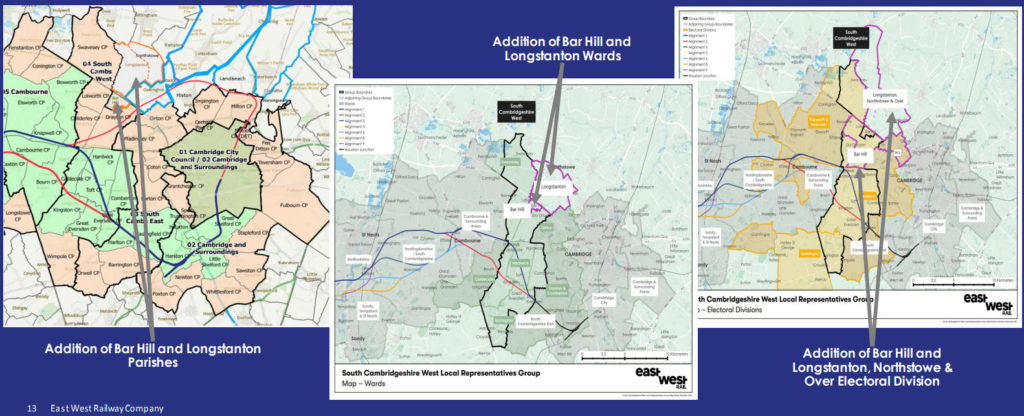
Each ward has at least one representative in the SCWLR Group, usually a Parish Councillor. The District and County councillors can also attend, and so I attend to represent villages affected in Caldecote Ward, especially Caldecote, Bourn and Kingston.
There is a webpage for the SCWLR Group on the EWR website here. So feel free to check it out for more details than I can give you here.
Date and Location of Meeting
The second meeting of the SCWLR Group took place in the evening of 11th July 2022 at the Cambridge Belfry Hotel. It was mixed in person and virtual meeting. I was the only member of the public physically present at the Cambridge Belfry location, others attended virtually.
Not only that, the hotel lost power supply that day, and the EWR Company staff had to improvise using their mobile phones and personal laptop battery power to be able to run the zoom meeting! It was an interesting event in that respect, finding myself the sole public person with the three or four EWR Company staff present!
The first meeting too place on 14 February 2022 (not very romantic is it?). The agenda and other meeting documents are now available here.
Purpose of Meeting
The purpose of the latest SCWLR Group meeting is to:
- present a deep dive into the Development Consent Order (DCO) process. The DCO process sits at the centre of many of the other topics of interest raised
- the timescales and next steps for the project
- exploring a proposal to revise the boundaries for the Group
That is exactly the items forming the discussion of the evening.
Development Consent Order Process
This is the process that will lead to obtaining planning permission for the railway line. Projects of this size go through the Government Planning Inspectorate (PINS), a process that could take at least 2 years from when the company submits its application. The full timeline is in the diagram below.
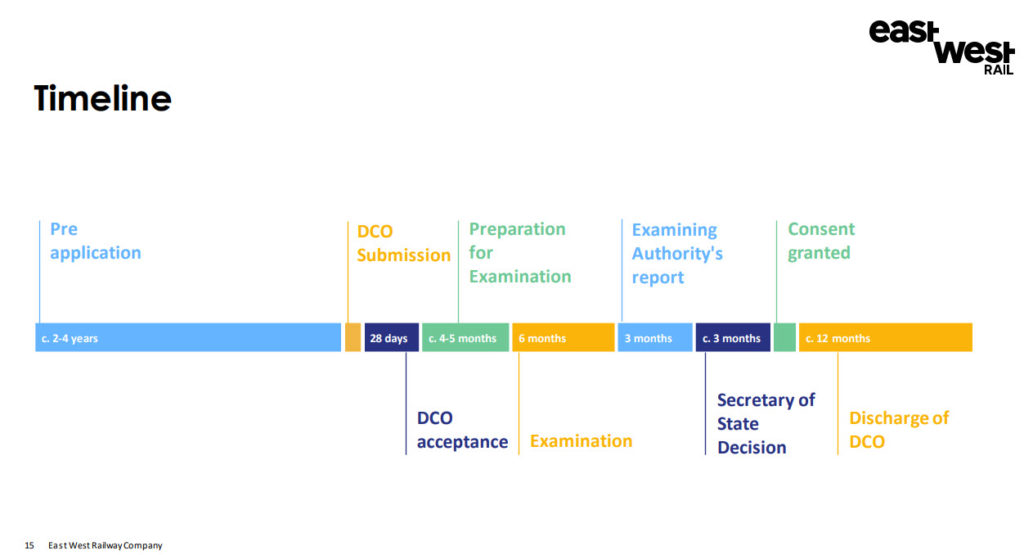
Before the submission, there is a pre-application stage where the EWR Company gathers all the information the project needs. The time frame for this varies and could in this case be up to 4 years. This is the phase the project is now.
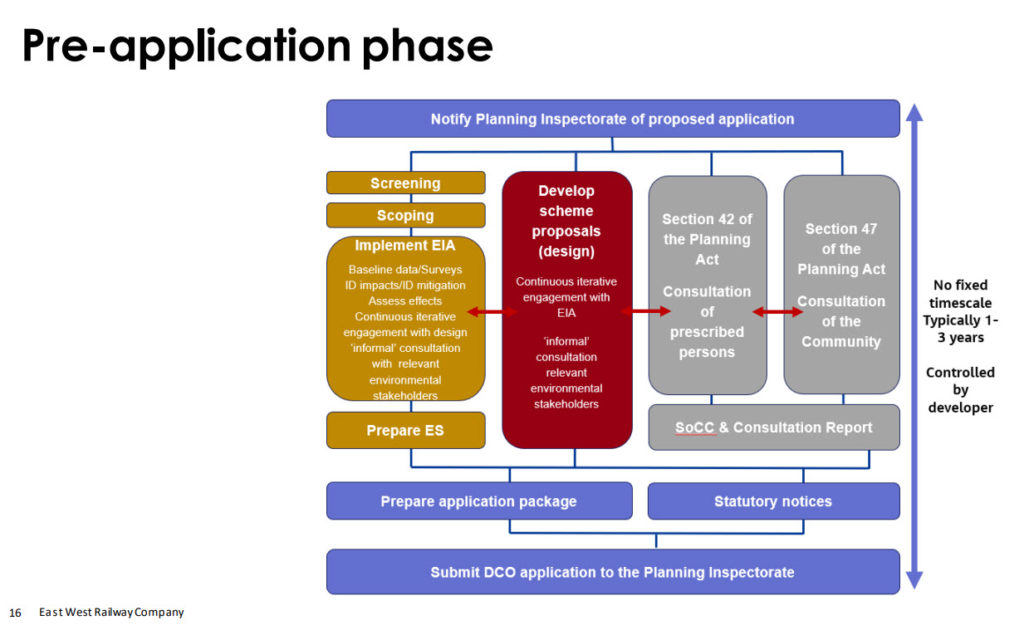
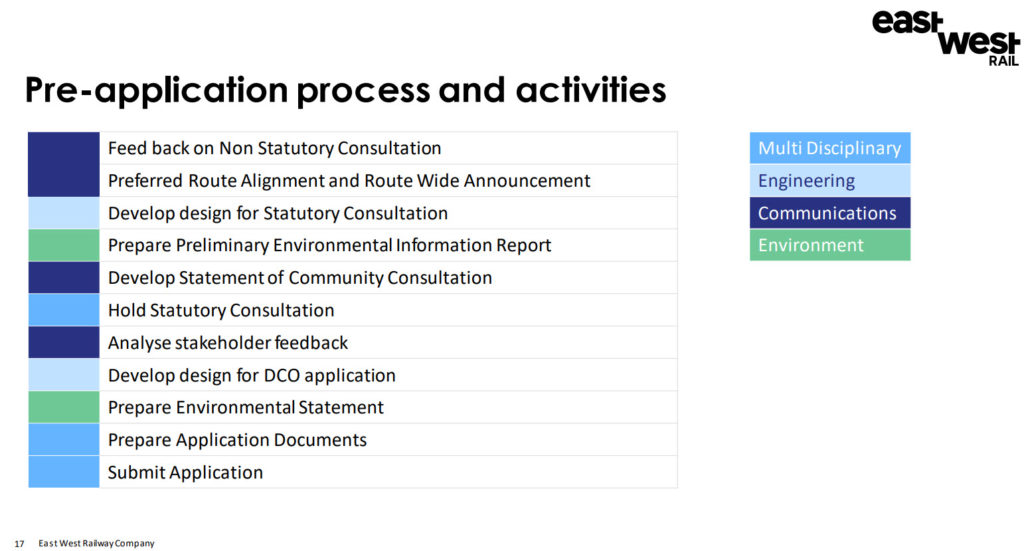
If you are interested in the details, you will find it in the slide presentation on the SCWLR Group webpage.
Further Discussions
As you will see from the list of pre-application process and activities snapshot, EWR is now analysing the feed back they got from the non-statutory consultation that took place in 2021. Attendees at the SCWLR Group meeting were able to point out that final selection of the alignment is key to further discussions. The statement from the EWR Company staff is to expect the announcement later this year, autumn or winter.
In the meantime, EWR states they are considering very seriously all the feedback they received from the non-statutory consultation. This includes the Northern approach. At which point I reminded them that I would be very much on their backs as whichever of the preferred alignments in that consultation is selected, my ward villages were in the front line.
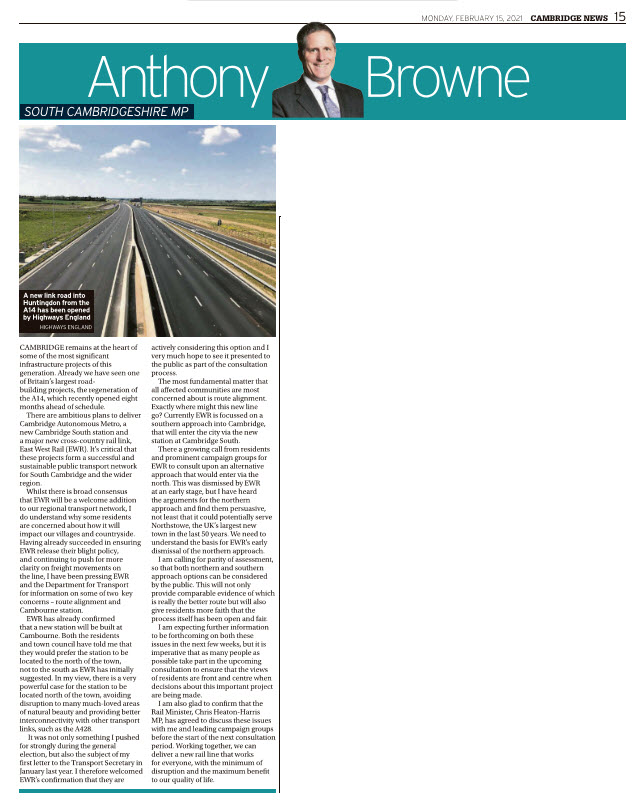
Another point I raised is that nothing they have said to date shows that the villages that would host this line had received any thoughts about what they would go through or what benefits could be provided to mitigate the harm that would be done if it went through.
At this point I remind my communities that Anthony Browne MP is on record as supporting the EWR line. Furthermore he is on record stating he pushed for and got the EWR Company to select the location of the station north of Cambourne rather than south. This is what pushed the preferred alignments up our way when we had not expected it.
Conclusion
There is no further information on route alignments, though EWR Company is trying to keep their engagement with communities. Whilst that is a good thing, it is my view the engagement could be better or consider my previous points about how the harm could be mitigated.
The next meeting of the SCWLR Group is likely to take place in the autumn.